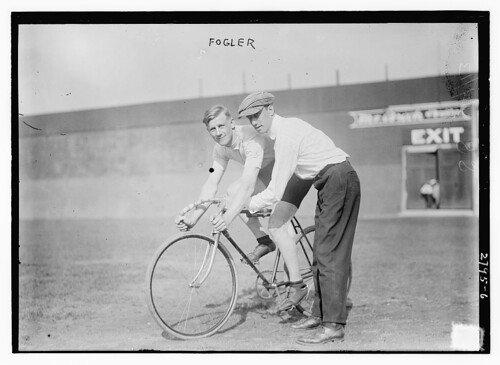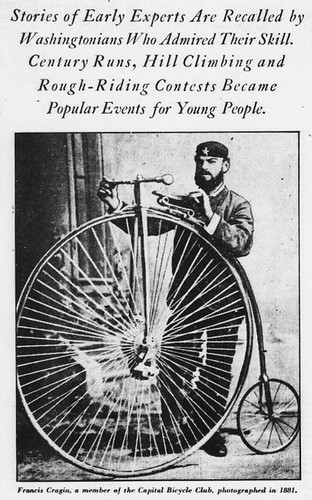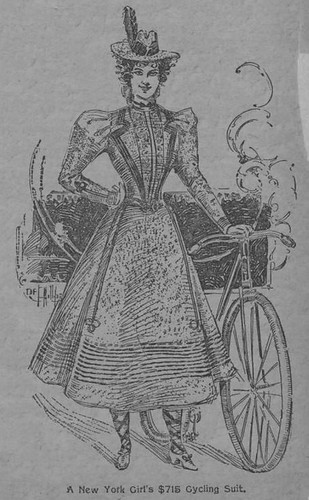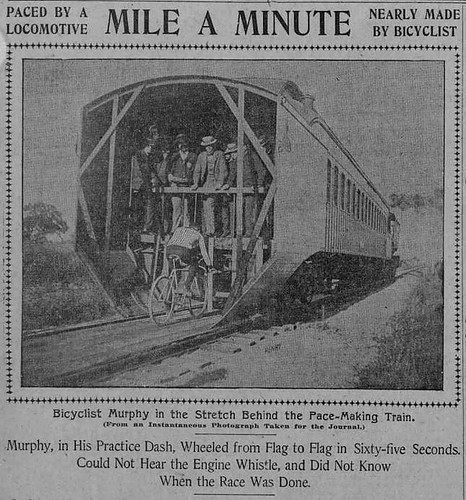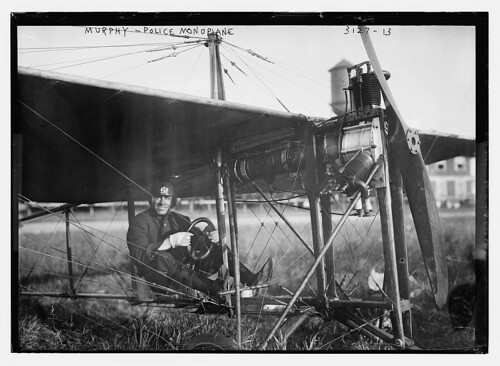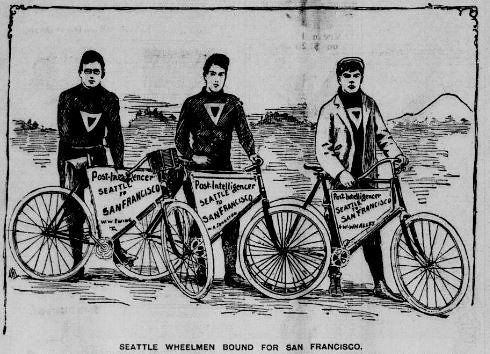
Newspaper sponsored cyclists riding from Seattle to SF
The Page devoted to cyclist interests in the Seattle Post-Intelligencer of 1897. From the Seattle Post-Intelligencer for 16 May 1897.
According to Biking Puget Sound (2nd edition) by Bill Thorness published in 2014 Seattle in 1900 had 55,000 residents and these 55,000 had 10,000 bicycles. Pretty impressive!
In looking at Seattle papers online, I see evidence of the interest in cycling with occasional full page coverage of the subject.
Here is the article's text:
SEATTLE TO SAN FRANCISCO
Arthur W. Whaliey, W. W. Ewing and Arnet Johnson, three well-known Seattle athletes, are now on their way to San Francisco by the pedal route. They left the city Friday afternoon at 2:45 o'clock on the steamer Flyer and commenced their long ride from Tacoma, intending to follow the telephone line to Portland. After leaving Portland the stumbling block will the Siskiyou mountains, but as their trip is not made on a wager or for the specific purpose of breaking down their constitutions by overexertion, they may be able to ride over the difficulties.
Prior to the completion of arrangements for the trip it was mutually understood that it was merely a pleasure jaunt, to end at San Francisco, providing the roads were !n good condition, and the riders did not play out. If the journey proves too hard a strain on one or all of them, they will take the first train and ride the remainder of the way, free from the companionship of the first relay of tramps.
The riders have followed the common-sense plan of reduicing the weight to be carried to the minimum. Every article that Is not absolutely necessary to their welfare has been discarded. In fact, the only supernumerary is a kodiak. which might be called a necessity tn this latter part of the nineteenth century.


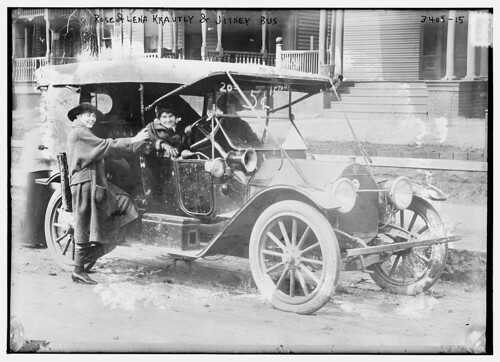

![Crippled German soldier [on bicycle] (LOC)](https://farm1.staticflickr.com/577/22211914854_348b929476.jpg)
